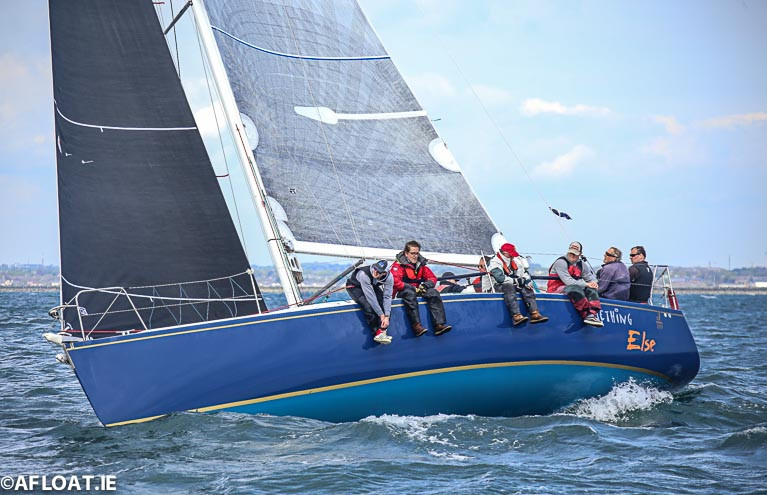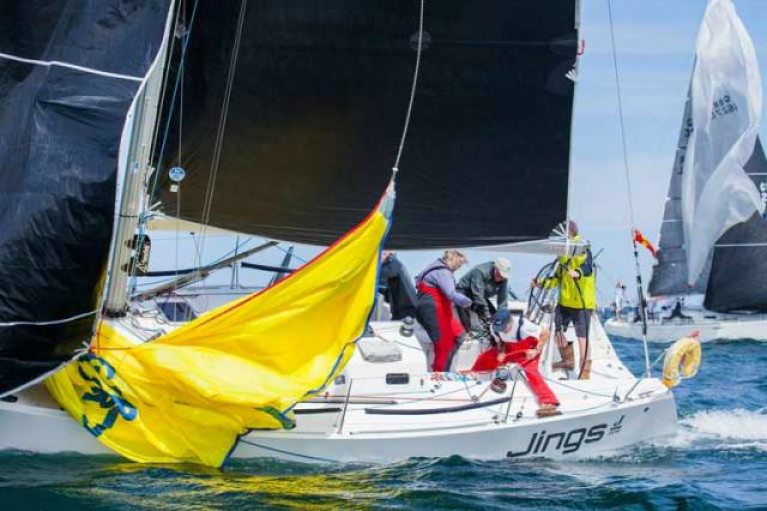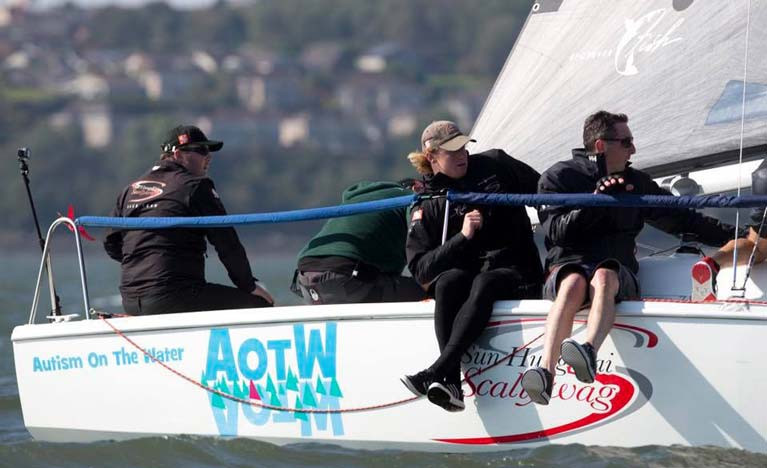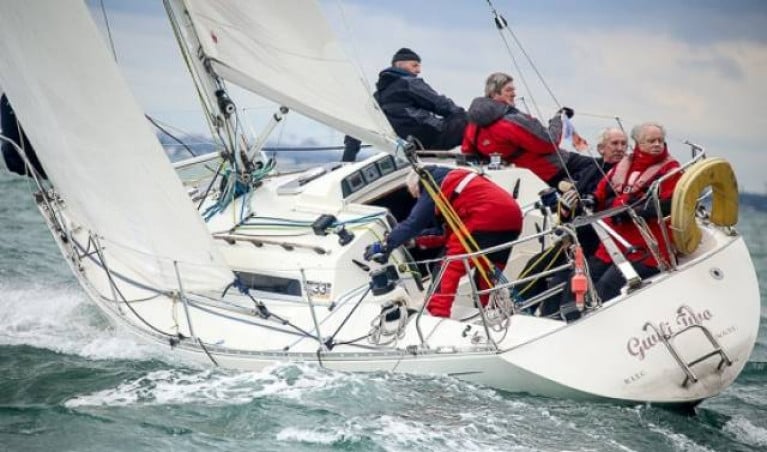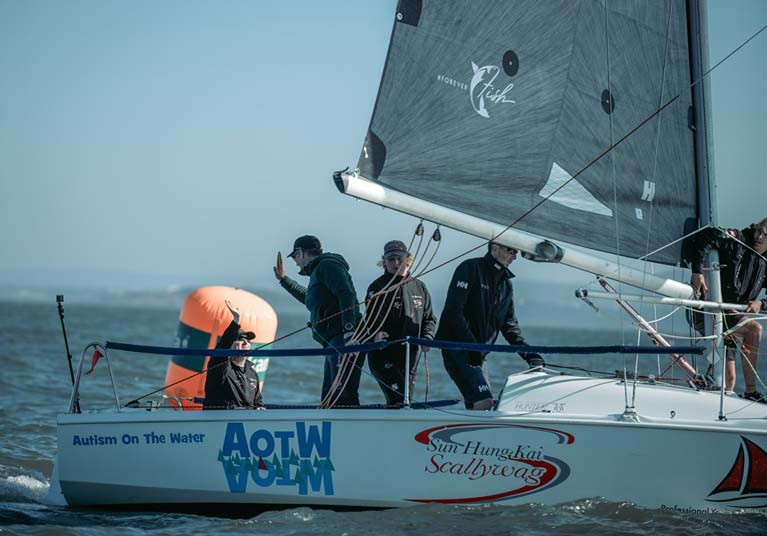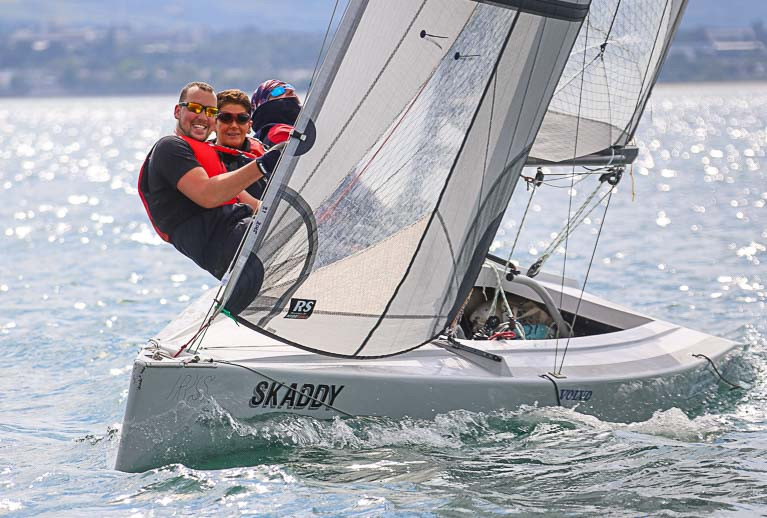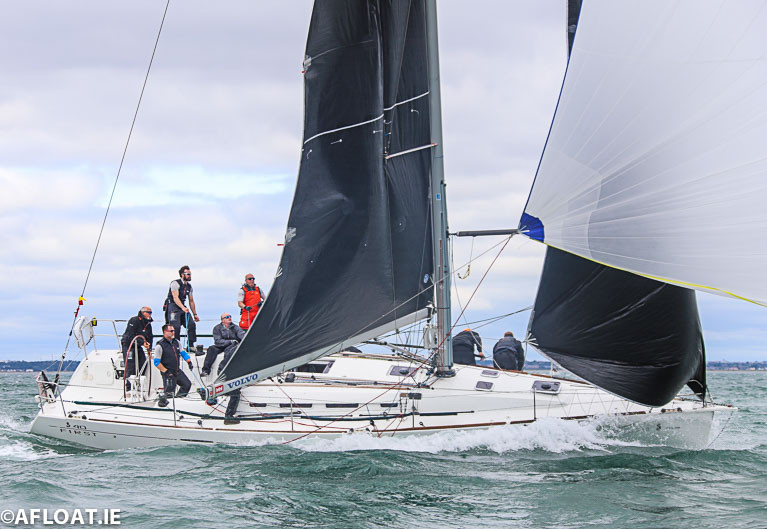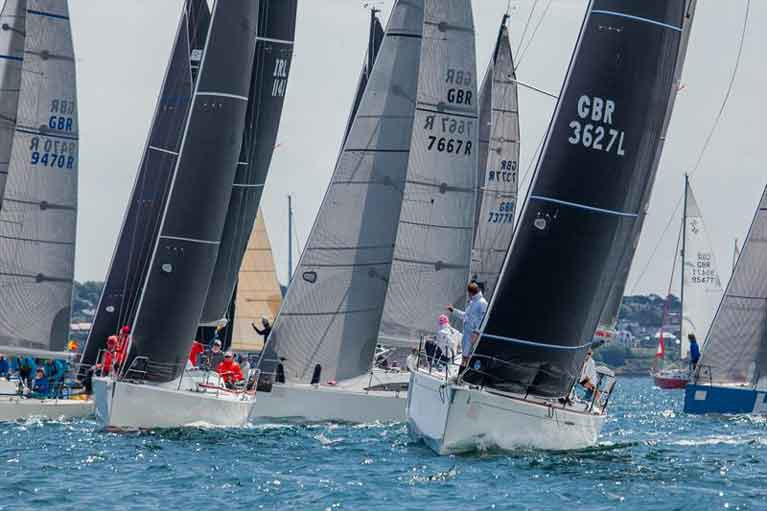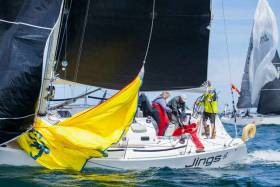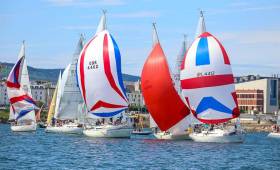Displaying items by tag: Bangor Town Regatta
2021 Irish Sailing Calendar Has Early Fixture Clashes
The wholesale cancellation of early 2020 regatta fixtures, is impacting the 2021 season with some conflicting dates appearing for May and June 2021.
So far, four key fixtures of Irish interest appear to be affected next season.
Firstly, Scotland's biggest sailing event, The Scottish Series at Troon, cancelled amid Covid-19 concerns last week, has published its usual UK Bank Holiday date of May 28-31 for 2021's edition. The Loch Fyne event is a traditional season opener in which Irish boats have dominated in recent years but 2021 may now lack Irish competition because this is also the date of the 2021 ICRA National Championships at the National Yacht Club at Dun Laoghaire on Dublin Bay.
A month later, Bangor Town Regatta on Belfast Lough, also cancelled last week, has been rescheduled for June 24-27, but this is the same long-standing date occupied by Kinsale Yacht Club's biennial Sovereign's Cup on the south coast.
So far, the rest of the 2021 season appears to be non-conflicting with the Dun Laoghaire Dingle 2021 Race on June 9 and Dun Laoghaire Regatta on July 8-11.
Attempts are usually made to avoid regatta date clashes because organisers typically like to attract visiting boats from outside a local catchment area for major events but when dates overlap this becomes impossible.
Bangor Town Regatta on Belfast Lough Falls Victim to Covid-19
Northern Ireland's biggest sailing event, Bangor Town Regatta on Belfast Lough has been cancelled over Covid 19 concerns.
A statement from the organising club, Royal Ulster, says: - “It is with deep regret that the Organising Committee of Bangor Town Regatta has made the difficult decision to cancel the 2020 regatta. This is a decision that has not been taken lightly and we do so in full consultation with the current Government guidelines on the ongoing Covid-19 situation which is expected to last into at least June 2020”
The Regatta was scheduled for 25th - 28th June with a programme of nine races and had already attracted 63 entries from across the British Isles and the Republic of Ireland.
The neighbouring Scottish Series, Scotland's biggest sailing event that was scheduled for the Clyde on May 22, has also become a casualty of Coronavirus restrictions and was cancelled last Friday.
The plan now is to run the Bangor Regatta from June 24-27 in 2021.
The statement continues: “We understand that this will be deeply disappointing to competitors, as it is for everyone involved, however, the health and wellbeing of our competitors, volunteers, supporters and the residents of Bangor are our utmost priority. The preparation involved in an event of this size is considerable both for the event organisers, host yacht club, suppliers and of course for competitors and their families and it is with this in mind that we have made the decision at this point. Full refunds will be available to those who have paid already and can be obtained by contacting the Royal Ulster Yacht Club Office.
A charity yachting organisation that was originally planning to sail from Scotland to Northern Ireland to save competition costs at Bangor Town Regatta this June has had its transport costs covered.
Murray McDonald, skipper of the Hunter 707 Autism on the Water, will now travel by ferry across the North Channel from Cairnryan in Scotland to Larne without charge.
With the original plan to sail across but with weather conditions being unknown for that time of year, it was decided to look into safer options of travel. Royal Ulster Yacht Club has worked with the charity to assist AOTW with transport to the event in A courier will transport the boat from Inverkip to Cairnryan.
AOTW Chairman and founder Murray said "this generosity from P&O is overwhelming and I cannot thank them enough. It is a big commitment for us to undertake this event because our boat is so small. We are pleased to have had so much help from P&O and the support of RUYC. We really are so very excited to be taking part in the regatta and we are planning to run a competition during the event with a prize of funding towards a sailing activity for an Autistic child based in the Bangor and Belfast area".
As Afloat previously reported, AOTW will compete in IRC Class 3. Murray McDonald, who is also autistic, will skipper the Hunter 707 with a well-drilled crew. The team’s main priority is to raise awareness of autism, but Murray hopes that a race win can be possibly achieved giving the right weather conditions.
Bangor Town Regatta Early Bird Entry Extended
Royal Ulster Yacht Club has extended its Early Bird entry discount for June's Bangor Town Regatta. The move comes after consultation with some of the competing classes who haven’t quite finalised their racing calendar for this year.
As a result, the Early Bird discount has been extended and will now run until 14th March.
The current entry of 63 continues to grow with the largest class at present being the Sigma 33s who are racing for the Irish Championship within the event.
Online entry is here
Bangor Town Regatta’s Class 3 sports a first-time entrant in Murray McDonald from Port Edgar, who confesses he has never been to the town before. Murray’s debut is in a Hunter 707 which has been raced competitively in the growing one-design fleet in Scotland and achieved success in events such as the Scottish Series and West Highland Week. The name is catching – Autism on the Water.
It’s a Scottish registered charity which raises awareness of the Autistic spectrum through the sport of sailing. Murray, the charity’s founder, who is autistic, has been building up this fantastic initiative which has become recognised not just across Scotland and the UK but also as far as Hong Kong, Australia and Antigua. The charity’s main ambassador is David Witt who skippered Sun Hung Kai Scallywag in the 2017-18 Volvo Ocean Race and he has been heavily involved in the charity’s success.
Autism on the Water provides opportunities for Autistic people of all ages to experience day sailing and more notably weekend outings on the tranquil Crinan Canal. The charity owns the Hunter 707. Murray skippers the boat with a crew who all have backgrounds involving autism; some are autistic themselves and others have relatives with Autism, all involved with the programme whilst wanting to create a better understanding of Autism through sailing.
Murray said “I have sailed for over 25 years and have never ever been to Bangor before! This year we are making a huge effort to race in this event hosted by Royal Ulster Yacht Club”. It also has had support from IRC Rating and RORC who have provided the boat with a generously discounted IRC Handicap Certificate.
The preferable way to get the boat to Bangor would be by ferry so the charity is looking to negotiate an achievable price. They are aware that it is costly but worth the exposure, and so Autism on the Water is hoping for sponsorship to help cover their logistical costs such as entry, ferry costs and transport. There would be substantial coverage on press and social media. More here
RS Elites Get Class Start at Bangor Town Regatta
The six RS Elites entered for Bangor Town Regatta on Belfast Lough now warrant their own class and with three days of the early bird entry left, there is still time for more to join them at the bargain rate.
Among the six are Jeff Ralston’s Upfront from Royal North, last year’s Irish champion as well as the second-placed boat in that event, the host club’s Storm (Polly, Kelso and Gunning). Storm was also the highest-placed boat from Northern Ireland in the National Championship last year at Dun Laoghaire Regatta, at eighth overall in the 31-boat fleet.
At present four of the six Elites are from Belfast Lough, and the others, John McRobert’s Swallow comes from Ballyronan Boat Club on Lough Neagh, and Janice McCrudden’s Bamboozled hails from Strangford Lough YC.
And it’s worth noting that berthing for boats not normally berthed in Bangor’s Quay Marina is included in the entry fee, as is, for the RS Elite class only, cranage. The Race Documents can be found on the Event website
Sigma 33s Lead the Entries for June's Bangor Town Regatta
Bangor Town Regatta entry is now open and it’s the Sigma 33s who lead the way with five entries already for the June event writes Betty Armstrong.
With Charles Hurst Jaguar Land Rover as headline sponsors, the event incorporates the Sigma British and Irish championships, so Class 6 is already showing considerable interest.
It is also part of the RC35 Celtic Challenge.
The 2018 regatta was a resounding success so with this year repeating the tried and tested four-day formula out of the Quay Marina Bangor, 2020 should be no different.
"This year repeating the tried and tested four-day formula"
There’s racing for ten classes ranging from the biggies to the smaller RS Elites, and Waverley and Fairy dayboats.
The Sigmas listed include the well-known local successful Squawk (Emma and Paul Prentice) as well as Mark Bradshaw’s Busy Beaver from Fairlie, James Miller’s Mayrise (Helensburgh), Insider owned by Stephan Mullaney of Howth and Partisan (Dan Lewis).
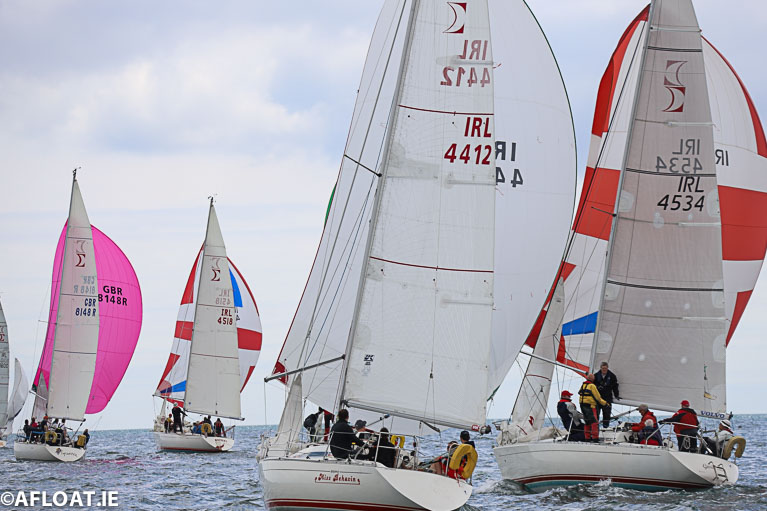 Sigma 33s will race for National Championships honours at Bangor Town Regatta in June Photo: Afloat
Sigma 33s will race for National Championships honours at Bangor Town Regatta in June Photo: Afloat
Jay Colville’s Forty Licks from East Down and RUYC comes with history, having clocked the same points as Rockabill VI in Division 0 in last year’s Frank Keane BMW ICRA Nationals in Dun Laoghaire.
Murray McDonald’s Port Edgar based Hunter 707, Autism on the Water, races in Class 3. It represents an internationally recognised charity that provides growth in the awareness of Autism and helps Autistic people access sailing and boating in general.
Phil Davis’s RUYC regular Giggle, completes the list so far.
Bangor Town Regatta 2020 is Launched By Royal Ulster Yacht Club
Bangor Town Regatta on Belfast Lough hopes to attract more than 60 boats and build on the success of the 2018 event, the formal launch of the regatta was told writes Betty Armstrong.
Charles Hurst Jaguar Land Rover is the prestigious headline sponsor of the regatta, hosted next year by Royal Ulster Yacht Club. At the formal launch of the event Head of Business Alan Thompson and Ruth Kimbley, Marketing Manager expressed their optimism and excitement at supporting what should be the largest regatta in Northern Ireland next year. The event will run from 25th till 28th June.
The gathering was welcomed to the club by Rear Commodore Maurice Butler who spoke about the success of the 2018 event. “We are trying to build on that success by running an even bigger event in 2020. We cannot do that without the support that our sponsors and our local Council provide. We are truly grateful for that support”.
BTR20 Chairman Gavin Watson was keen to convey his hopes for a great four days. He said that the competitors would be “welcomed to the town and to Bangor’s Quay Marina, and the club would strive to give them a yachting competition which will provide plenty of good racing and just as importantly a warm welcome to the Royal Ulster clubhouse”.
It’s expected that the fleet will number upwards of 60 with several hundred crew and supporting visitors. Among the classes expected are IRC, Sigma 33, RS Elite, and day boats such as Waverleys and Fairies.
 (from left to right) Bangor Town Regatta Chairman Gavin Watson, Alan Thompson of sponsors Charles Hurst and Robbie Milhench
(from left to right) Bangor Town Regatta Chairman Gavin Watson, Alan Thompson of sponsors Charles Hurst and Robbie Milhench
Strong interest has been shown by Jay Colville’s First 40, Forty Licks, who had a class win in IRC1 at the Scottish Series this year and by Jamie McWilliam’s Signal 8, the Ker 40, (Royal Hong Kong YC), a competitor in 2018, with Bangorian Jamie Boag on board. Also, on the horizon is El Gran Senor, Jonathan Anderson’s J122 from the Clyde, runner up to Forty Licks at Tarbert. A substantial RC35 fleet, who obviously liked the previous BTR is said to return. The Sigma 33s will hold their class championship within the event, so a good size fleet is expected in which local man Paul Prentice in Squawk will no doubt aim to better his Scottish Series runner up slot. A feeder race from Dun Laoghaire is scheduled for 20th June.
"A feeder race from Dun Laoghaire is scheduled for 20th June"
The fleets will race out of the Bangor’s Quay Marina, (another important supporter), on what is Belfast Lough’s enviable area of tide and hazard free waters. Two round-the-buoys courses within a manageable distance from the marina will provide testing but enjoyable racing and in addition, coastal races every day will give those who prefer somewhat more leisurely competition, the opportunity to use the whole of the Lough.
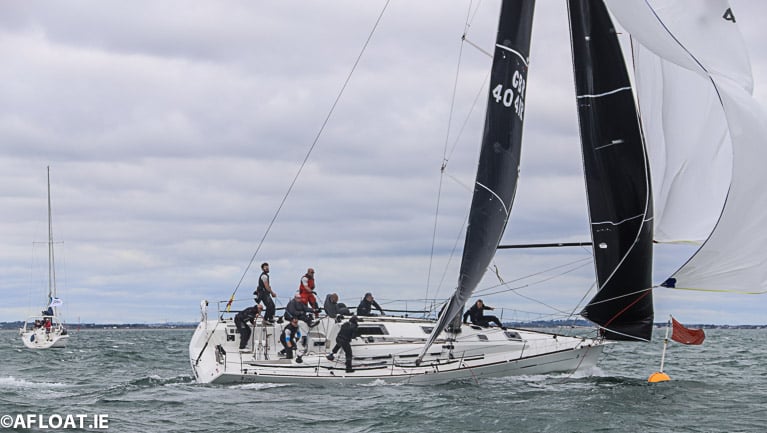 Jay Colville’s First 40, Forty Licks Photo: Afloat
Jay Colville’s First 40, Forty Licks Photo: Afloat
Racing will be in the capable hands of International Race Officer and National Judge, local man Robin Gray, whose skill and expertise is well known, and the Race Office will be conveniently located at the Marina close to where the après sailing will be well catered for with a bar and food stall beside the chandlery.
Alan Thomson of Charles Hurst said that Bangor Town Regatta is “a very exciting addition to the Jaguar Land Rover sailing calendar and one we are very proud to sponsor”. Alderman Bill Keery, Mayor of Ards and North Down Council emphasised that BTR20 would provide a boost to the local economy and that “by working together we would be able to grow and improve on the successful 2018 regatta”.
The Notice of Race will be posted on the event website
Bangor Town Regatta Shapes up for 2020 Edition from June 25-28
A ‘Town’ Regatta in Bangor first saw the light of day a century ago and Belfast Lough will, from 25th till 28th June next year, see a repeat of the 2018 reincarnation as Bangor Town Regatta, a four-day multi-class event writes Betty Armstrong.
Hosted by Royal Ulster Yacht Club in partnership with Ards and North Down Borough Council, the 2020 event is shaping up to be bigger and better than 2018.
As Afloat reported in April, based in the 5 Gold Anchor Quay Marina in Bangor, the fleets can expect top-class racing in virtual tide and hazard free waters. Two separate race areas will see competitors battle it out over four days of close racing. A highly experienced team, including International Race Officer, Robin Gray, will deliver top quality racing along with a social programme at the prestigious Royal Ulster Yacht Club.
For the onshore “support” teams, Ards and North Down offers world-famous tourist attractions such as Game of Thrones filming locations and tours, historic walking areas and National Trust properties,
Event Chairman, Gavin Watson said, “I am really looking forward to welcoming all sailing competitors and supporters to Bangor in June 2020. This will be four days of sailing and socialising to remember! The sailing waters off Bangor offer exciting opportunities to the very best sailors from around the UK and Ireland and coupled with the impressive backdrop of our host venue Royal Ulster Yacht Club, the event is shaping up to being a memorable occasion. Come and enjoy the Craic!”
Further information will be available on the official Regatta website
Sunshine and wind and the start of the Scottish Series to get everyone in the mood again for the new sailing season. And not long to go until Howth host their inaugural Wave Regatta followed by the return to Belfast Lough in early July for the renamed 'Bangor Town Regatta'.
The event is being hosted by the town’s two yacht clubs – Ballyholme Yacht Club and Royal Ulster Yacht Club.
More than a dozen classes of yachts and dinghies, and hundreds of sailors, will compete on four courses during the four days of the regatta, with both the RS200 & RS400 classes using the event to hold their Irish National Championships. With so much activity on the water, this will be a wonderful event for participants and spectators alike, and, with a full programme of shore-side activities, this will be a real family attraction.
There are a number of heavy hitters enrolled in Class 1 including Jamie McWilliam's Ker 40 Signal 8 (Hong Kong YC) and Jay Colville's Forty Licks (East Down YC) as well as a good number of RC35's and Quarter Tonners entered.
The Sigma 33 class are expected to come out in force after competing at their Class Championship in Dun Laoghaire.
And the oldest fleet in the Lough – the Waverley Class which has blossomed again in recent years with 12 on the water last summer – hope to attract other classic fleets such as the Fairies, Glens, Rivers and even some of the Howth 17's that made the journey up for RUYC's 150th celebrations.
Early entry discount is still available but ends next Friday
Event Chairman, Jim Coffey of RUYC, said: In Ballyholme Bay and Belfast Lough we have a wonderful sailing area that is internationally renowned, and in recent years our clubs have hosted a number of international events. Even so, this will be the largest sailing event ever to be hosted in Bangor. Bangor is a popular tourist destination for day-trippers and holidaymakers, and its five-star marina welcomes sailors from all over the world. We are keen to ensure that this is an event that will become a regular feature in the sailing calendar.”
Classes:
Class 1 – IRC with TCC 1.041 and above
Class 2 – IRC with TCC from 1.015 to 1.040 (RC35 Class)
Class 3 – IRC with TCC 1.014 or less
Class 4 – Quarter Ton Class – see NOR Attachment 1 for eligibility
Class 5 – NHC with Base Number 0.901 or above
Class 6 – NHC with Base Number 0.900 or below
Class 7 – Sigma 33 OOD
Class 8 – Restricted Sail Class NHC
RS Elite
Waverley
Multihull Dinghies
International Laser
RS400 & RS200 Irish National Championships:
RS400
RS200


























